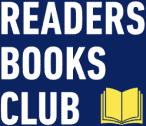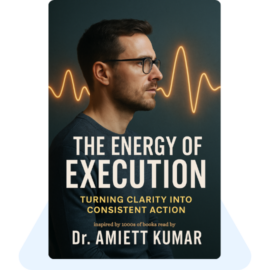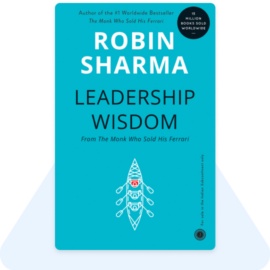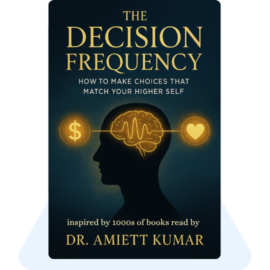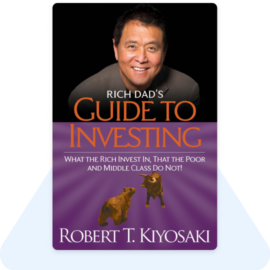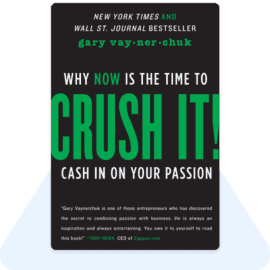Introduction — The Gap Between Knowing and Doing
Everyone knows what to do.
Few can sustain doing it.
We live in an age of clarity overload — vision boards, goals, planners, affirmations. Yet, most people struggle to execute beyond the first burst of motivation. Not because they lack ambition, but because their energy architecture isn’t built for consistency.
The truth is, clarity doesn’t create movement — energy does.
Your brain can have the perfect plan, but if your emotional and biological energy aren’t aligned, execution collapses under its own weight.
Modern neuroscience reveals that every action requires three layers of fuel:
- Cognitive energy — the brain’s attention bandwidth.
- Emotional energy — the charge that gives meaning to a task.
- Physiological energy — the biological rhythm that sustains motion.
When any of these three fall out of sync, the brain confuses intention with achievement. You plan, visualize, talk about it — and your reward system gives you a false sense of progress. This is why people feel busy yet stagnant, inspired yet drained.
The Energy of Execution is not about forcing willpower; it’s about learning how energy behaves inside you.
Once you understand how momentum forms, you stop chasing motivation and start engineering motion. You move from emotional reactivity to energetic precision.
This book will show you that execution isn’t the opposite of spirituality — it’s its most practical expression. Because when clarity and energy align, doing becomes a natural extension of being.
“Execution is not effort; it’s energy flowing in the direction of clarity.”
Chapter 1 — The Neuroscience of Momentum
Momentum is not magic — it’s chemistry.
It begins deep inside the brain’s reward network, a system wired to predict pleasure, not just experience it.
At the center of this system lies dopamine — often misunderstood as the “pleasure chemical.” In truth, dopamine is less about happiness and more about anticipation. It’s the molecule of progress expectation. When you take a small action and see even a hint of progress, dopamine surges, motivating you to continue.
That’s why crossing off a task feels good — your brain rewards completion.
But here’s the paradox: when goals are too distant, dopamine can’t detect progress, and motivation fades.
The brain’s reward system operates on short feedback loops.
It thrives on small wins, not giant leaps.
The Momentum Circuit
Momentum engages three key regions:
- Prefrontal Cortex: Sets intention and organizes action.
- Basal Ganglia: Automates repeated motion, creating flow.
- Ventral Striatum: Delivers dopamine hits for perceived progress.
When these three operate in sync, you experience forward motion — even if results are far away.
But when uncertainty or fear hijack the amygdala, the prefrontal cortex dims, and execution freezes. This is why self-doubt feels physically heavy: your brain literally shuts down movement circuits to conserve energy.
The secret to sustained execution lies in micro-momentum.
Tiny actions that produce visible progress re-ignite the dopamine circuit without overwhelming your nervous system.
Think of it as neuro-momentum: a rhythm where each small act reinforces your identity as someone who follows through.
For instance:
- Writing for 10 minutes instead of planning a full book.
- Making one sales call instead of reorganizing the entire funnel.
- Meditating for 3 minutes instead of scheduling an hour.
Each micro-execution tells your brain: “I’m in motion.”
Once motion starts, energy multiplies — because dopamine predicts more reward ahead.
Momentum as an Energy Loop
Momentum isn’t sustained by willpower; it’s sustained by feedback.
Action → Progress → Reward → Motivation → More Action.
The loop feeds itself until interrupted by overanalysis or exhaustion.
To keep the loop alive, reduce friction, measure visible progress, and celebrate movement over magnitude.
“Progress, not perfection, is the biological key to motivation.”
Key Takeaway:
Momentum is a neurochemical state created by consistent feedback, not by grand outcomes.
When you act small and celebrate often, your brain learns that energy equals movement — and movement creates mastery.
Chapter 2 — Emotional Resistance: The Invisible Energy Leak
You don’t lose energy because you’re lazy.
You lose energy because you’re conflicted.
Most people know what to do but can’t get themselves to do it — not because of lack of knowledge, but because of an emotional mismatch between intention and identity.
When your conscious mind says, “I should do this,” and your subconscious whispers, “I’m not ready,” energy leaks. The brain enters a tug-of-war between progress and protection.
The Safety Bias of the Brain
The human brain evolved for safety, not success.
The amygdala, our emotional alarm system, constantly scans for threat. And to the brain, change itself is a threat.
Starting a new project, speaking up, taking a risk — all trigger micro-stress responses. The amygdala releases cortisol, subtly tightening your muscles and lowering dopamine flow. This is why even meaningful goals can feel heavy or draining.
Procrastination, perfectionism, and overthinking are not personality flaws — they’re safety strategies.
They protect your nervous system from discomfort, even at the cost of progress.
When you delay action, your brain experiences short-term relief. That relief becomes a reward loop — reinforcing the very behavior that drains you in the long run.
Understanding this turns self-blame into self-mastery. You don’t fight resistance; you retrain it.
The Emotional Audit
Before forcing action, pause and identify the emotion underneath.
Ask yourself:
- “What am I afraid might happen if I succeed?”
- “What identity am I protecting by not moving?”
- “What emotion do I avoid feeling when I delay?”
Often, resistance hides unprocessed fear of visibility, judgment, or failure. Once acknowledged, the amygdala calms, allowing the prefrontal cortex to regain control.
Emotional Transmutation
Energy doesn’t vanish — it transforms.
When you name, feel, and reframe your emotion, the same energy that created resistance fuels motion.
For example:
- Turn anxiety into anticipation.
- Turn guilt into gratitude for awareness.
- Turn doubt into data — feedback for better alignment.
You stop pushing against emotion and start moving with it.
“You can’t outthink emotional resistance; you must out-feel it.”
Key Takeaway:
Resistance isn’t your enemy — it’s emotional energy asking for redirection.
When you stop fighting your feelings and begin working with them, action becomes a release, not a battle.
Chapter 3 — The Action Loop: From Thought to Movement
Every action begins as an electrical signal.
A single neuron fires, carrying an intention from thought into muscle. That’s execution — biology in motion.
But between thinking and doing lies the most fragile bridge in human behavior: activation energy.
The Mechanics of Movement
Once a decision forms in the prefrontal cortex, it must pass through the motor cortex to translate into motion.
If the emotional centers (amygdala or anterior cingulate cortex) detect fear, uncertainty, or threat, they suppress this pathway.
That’s why you can think “I should go for a walk” while your body stays frozen.
The brain hasn’t yet found emotional permission to act.
The solution isn’t more planning — it’s lowering the barrier to activation.
You don’t need to feel ready to move; you need to move to feel ready.
This is the principle behind the Action Loop:
Act → Feedback → Adjust → Repeat.
Motion generates clarity far faster than thought ever can.
Each small action produces new data — sensory, emotional, and cognitive — which your brain uses to recalibrate. Over time, this feedback loop becomes your most powerful teacher.
The 5-Second Window
Psychological inertia lasts only a few seconds before fear takes over.
When you get an impulse to act — make a call, write the idea, step outside — you have a 5-second neuro-window before the brain rationalizes delay.
Initiate within that window, and your nervous system rewires toward momentum. Delay, and the amygdala wins another round.
Think Small, Start Smaller
The biggest myth in execution is that big goals require big effort.
In truth, small starts bypass resistance and trigger dopamine earlier.
Your brain doesn’t measure the size of action — it measures completion.
So one push-up, one paragraph, one phone call — that’s enough to ignite the reward loop.
Repetition Builds Identity
Every repeated action creates a predictive model:
“This is who I am now.”
That identity shift — not motivation — sustains long-term consistency.
Your mind stops negotiating each task and begins expecting action as normal.
“Clarity creates direction, but action creates identity.”
Key Takeaway:
The bridge between thought and motion is built through micro-action and rapid feedback.
Start before you feel ready, and your brain will learn to trust movement more than mood.
Chapter 4 — Energy Calibration: Managing Biological Rhythm
Execution is not only mental — it’s biological.
Your body is not a machine that runs on discipline; it’s an ecosystem that thrives on rhythm.
When that rhythm is misaligned, no amount of motivation can compensate.
Most people fail not because they lack goals but because they schedule against their biology. They push when their brain is tired, and rest when it’s alert — creating a constant mismatch between energy and action.
The Science of Circadian Flow
Every human being has an internal clock — the circadian rhythm. It governs alertness, focus, and recovery across a 24-hour cycle.
Your chronotype (morning, mid-day, or evening energy peaks) decides when your brain performs best.
Research shows that:
- Morning peaks (8–11 a.m.) favor analytical thinking and focus.
- Midday dips (1–3 p.m.) are ideal for reflection, routine, or rest.
- Evening surges (4–8 p.m.) awaken creativity and problem-solving.
When you align your tasks with your biological highs and lows, you create effortless execution.
You stop forcing energy and start flowing with it.
Energy as Breath, Not Battery
Energy doesn’t run out — it fluctuates with regulation.
Your nervous system operates between two states:
- Sympathetic Activation — alert, action-ready (your “go” energy).
- Parasympathetic Recovery — calm, creative, reflective (your “grow” energy).
Sustained performance requires a dance between both — tension and release, focus and rest.
If you stay too long in the “go” state, burnout follows; too long in “grow,” and stagnation sets in.
Breathwork, hydration, sunlight exposure, and mindful breaks act as reset signals that recalibrate your nervous system.
A five-minute walk outdoors can restore more clarity than an hour of overthinking.
Energy Mapping Exercise
Track your energy every two hours for three days.
Notice when your focus is sharpest, when fatigue hits, and when creativity flows.
Design your high-value tasks around your natural peaks.
You’ll find your own rhythm — your biological sweet spot.
“You don’t manage time — you manage the energy that experiences time.”
Key Takeaway:
Sustainable execution isn’t about working longer; it’s about working in rhythm.
When you honor your body’s natural cycles, your biology stops resisting your goals — it starts supporting them.
Chapter 5 — The Friction Formula: Designing Low-Resistance Habits
The easiest way to execute more is to make doing easier.
We often romanticize self-discipline, but science shows that behavior follows environment more than intention.
Every friction point — clutter, distraction, emotional load — steals momentum from your limited pool of daily energy.
Reduce friction, and consistency becomes effortless.
The Physics of Behavior
In physics, friction resists motion. In psychology, decision friction resists action.
It’s the subtle hesitation you feel before starting — the mental drag of locating tools, deciding where to begin, or recalling why it matters.
Each micro-barrier increases cognitive load, depleting motivation before you even start.
Behavioral scientists call this Choice Architecture.
It’s the design of your environment to make good behaviors automatic and poor ones inconvenient.
Designing for Ease
- Make the First Step Stupidly Small:
If your first step takes less than 30 seconds, your brain doesn’t perceive it as effort.
(e.g., “Open laptop and write one line,” not “Write the chapter.”) - Reduce Access Friction:
Keep tools visible and ready — journal on your desk, sneakers by the door, water bottle filled.
Visibility signals priority to your subconscious mind. - Add Micro-Rewards:
The brain repeats what it celebrates. A small checkmark, a streak, or a quick reflection note releases dopamine, reinforcing the loop. - Redesign for Consequence:
Make distraction harder — log out, block notifications, rearrange workspace flow.
Increase friction for the behavior you want to avoid.
When the environment is optimized, action becomes default.
Your willpower remains free for creativity, not survival.
The Two-Minute Rule
James Clear popularized it, but neuroscience explains why it works:
Small actions bypass the brain’s threat detector (amygdala) because they don’t register as risk.
Once you begin, momentum activates the Zeigarnik effect — the brain’s natural discomfort with incomplete tasks — pushing you to continue.
The Flow of Ease
When everything unnecessary is removed, execution feels light.
Ease is not laziness; it’s alignment.
You’re not making yourself do things — you’re designing conditions where doing becomes obvious.
“Discipline is not force — it’s the absence of friction.”
Key Takeaway:
The key to consistent execution is not more control but less resistance.
Design your environment, tasks, and mind in a way that movement feels like the natural state — not an uphill battle.
Chapter 6 — Flow Triggers: Entering the State of Effortless Execution
There are moments when effort disappears — when action flows without resistance, and time feels elastic.
That state isn’t luck; it’s neurological harmony.
Psychologist Mihaly Csikszentmihalyi called it flow — a state of total absorption where challenge meets skill, and the self temporarily dissolves.
Neuroscience now shows that flow isn’t mystical; it’s a sequence of neurochemicals perfectly timed for peak performance.
The Flow Sequence
When entering flow, your brain transitions through four stages:
- Struggle – High beta waves; cortisol rises; you push through complexity.
- Release – You let go; the prefrontal cortex begins to quiet down.
- Flow – Alpha and theta waves dominate; dopamine and norepinephrine flood the system, heightening focus and creativity.
- Recovery – Serotonin and oxytocin rebalance the nervous system for integration.
Most people never reach flow because they quit in the struggle stage — mistaking tension for failure.
But tension is simply the brain loading data before the release.
The Challenge–Skill Balance
Flow requires precise calibration: the task must be just hard enough to stretch you, but not so hard that it overwhelms.
In neuroscience terms, this maintains optimal dopamine arousal — too little equals boredom, too much equals stress.
Set micro-goals that sit about 4 % above your comfort zone; that’s the sweet spot where learning and motivation meet.
Triggers That Induce Flow
- Deep Focus: Eliminate distractions for at least 25 minutes; it takes the brain 8–10 minutes to enter flow.
- Clear Goals: Ambiguity kills flow; define exactly what “done” means for the next block of work.
- Immediate Feedback: Instant data tells the brain it’s progressing, maintaining dopamine momentum.
- Embodied Involvement: Use your body — typing, speaking, moving — to anchor the mind in present-moment awareness.
- Novelty and Curiosity: New stimuli release norepinephrine, sharpening focus and learning.
Flow isn’t about forcing concentration — it’s about creating the conditions for the brain to forget itself.
When the self fades, energy integrates.
“Flow is not when you try harder; it’s when you disappear deeper.”
Key Takeaway:
Flow is your natural state of execution once stress and focus find balance.
Design for flow by combining clarity, challenge, and curiosity — and you’ll work long hours with half the fatigue.
Chapter 7 — Cognitive Recovery: Rest as a Strategic Tool
Execution isn’t sustained by effort — it’s sustained by recovery.
Yet in a world that glorifies grind, rest is mistaken for weakness.
In reality, recovery is how the brain consolidates learning and restores energy for the next cycle of execution.
The Default Mode Network
When you stop actively thinking, the brain’s Default Mode Network (DMN) turns on.
This network processes memories, links ideas, and integrates emotions — basically, it’s where insight happens.
That’s why solutions arrive in the shower or during a walk — the brain needs spaciousness to reorganize data.
During sleep and quiet reflection, glial cells literally flush metabolic waste from neurons, clearing mental fog.
Without rest, execution turns into diminishing returns: each hour of work produces less clarity and more irritability.
The Recovery Spectrum
Recovery isn’t just sleep — it’s a spectrum of micro and macro resets:
- Micro-Breaks (1–5 min): Stand up, stretch, breathe deeply. They reset cortisol and refocus attention.
- Active Rest (15–60 min): Walk, music, nature. Mild movement enhances alpha waves linked to creativity.
- Deep Rest (7–9 hrs): Sleep consolidates memory and balances neurotransmitters.
- Reflective Rest (weekly): Disconnect from inputs — no news, no notifications — to reclaim mental sovereignty.
The Rest-Productivity Paradox
High performers often fear rest because it feels unproductive, but true productivity emerges from oscillation — the ebb and flow of activation and restoration.
Elite athletes train less than they recover; creatives create best after periods of silence.
The same applies to execution — you can’t output what you haven’t recharged.
Recovery Rituals
- Evening Shutdown: List three wins and close the day psychologically.
- Digital Detox Windows: One hour of device-free time before bed resets melatonin and reduces mental stimulation.
- Weekly Reflection: Ask, “What did I learn this week?” — not “What did I finish?”
These rituals turn rest into an intentional practice — a discipline of renewal rather than a collapse of fatigue.
“Rest is not the opposite of work; it’s the completion of it.”
Key Takeaway:
Recovery is how the brain keeps its promise to you. Without periods of recharge, execution burns out its own fuel.
When you treat rest as a strategy, you turn fatigue into focus again and again.
Chapter 8 — Identity Energy: Becoming the Person Who Follows Through
Consistency is not a behavior — it’s an identity frequency.
You don’t perform consistently because you try harder; you do so because you’ve become someone who doesn’t question execution anymore.
From Action to Identity
Every repeated action sends a signal to your brain:
“This is who I am.”
Neuroscientists call this self-referential reinforcement — each behavior strengthens neural connections associated with your self-image.
So, when you repeatedly show up, even in small ways, you are literally rewiring your sense of self from “I try” to “I do.”
Your identity is a pattern of remembered experiences. When those experiences are aligned with follow-through, momentum becomes automatic.
You no longer rely on mood; you operate from memory — the memory of being someone who completes what they start.
The Identity Alignment Model
- Behavior: Small, visible acts that confirm intention.
- Belief: “I’m becoming someone who does this naturally.”
- Being: The new identity solidifies — execution becomes instinct.
You don’t have to wait for full transformation before believing differently.
Identity change is recursive — belief fuels behavior, and behavior reinforces belief.
Energy of Integrity
Execution drains energy only when your actions and identity conflict.
When you act out of alignment — pretending, forcing, or performing — your nervous system expends more glucose managing internal dissonance.
When you act in truth, energy flows freely.
Integrity is simply inner coherence — the shortest path between intention and expression.
The most sustainable energy comes from self-respect.
When your word means something to yourself, follow-through becomes emotional nourishment, not obligation.
Reprogramming Identity with Evidence
To install a new identity, build evidence for it daily:
- Keep small promises and record them.
- Replace “I hope” with “I am learning.”
- Track completions, not attempts.
Tiny proofs of consistency build a feedback loop of self-trust — and self-trust is the foundation of energy.
“When your identity aligns with your intention, execution feels like breathing.”
Key Takeaway:
The strongest energy source is self-image.
When you see yourself as the kind of person who follows through, the brain’s energy system supports that narrative automatically.
Chapter 9 — The Rhythm of Mastery: Consistency as a State of Being
Mastery isn’t built through intensity — it’s built through rhythm.
Intensity burns energy; rhythm preserves it.
It’s not how hard you work that defines success, but how sustainably you can repeat it.
🎵 The Pulse of Progress
Every master — athlete, artist, leader — operates through cycles: exert, recover, refine, repeat.
This rhythm creates what neuroscientists call long-term potentiation (LTP) — the strengthening of neural pathways through repeated, spaced practice.
It’s like tuning a frequency over time — not blasting it louder, but refining it clearer.
Consistency is a neurological habit, not a motivational feat.
Your brain craves predictability.
When you create repetitive rituals — same morning start, same focus blocks, same closure practice — your nervous system conserves decision energy.
Over time, effort transforms into ease.
The Discipline of Balance
Peak performers understand that rhythm requires oscillation.
They know when to push and when to pause.
Without deliberate balance, productivity turns into pressure, and pressure into paralysis.
Mastery means honoring both the doing and the being.
You can’t sprint your way to excellence — you must breathe your way there.
The Three Layers of Sustainable Mastery
- Clarity: Know what truly matters — define fewer, better goals.
- Cadence: Build a repeatable rhythm of work and recovery.
- Coherence: Align emotion, energy, and environment with purpose.
When all three align, execution no longer feels like effort.
It becomes an expression of who you are — rhythmically, naturally, indefinitely.
The Energy Equation
Energy = Intention × Rhythm × Recovery
When any variable drops to zero, execution collapses.
But when rhythm is maintained — even gently — energy multiplies.
That’s why steady progress always outlasts sudden brilliance.
“Mastery is not speed; it’s stability. The rhythm that never breaks becomes the art itself.”
Key Takeaway:
Consistency isn’t a discipline you enforce; it’s a rhythm you embody.
When your life, biology, and intention move in sync, execution becomes a living meditation — effortless, expansive, and infinite.
Conclusion — When Motion Becomes Meditation
Clarity gives you direction.
But energy — that subtle, unseen current of attention, emotion, and rhythm — is what carries you forward.
For most people, execution is treated as punishment: a test of discipline, a battle of will.
But true execution — the kind that lasts — is not born from force.
It’s born from flow.
When your thoughts, emotions, and biology move in coherence, doing stops feeling like effort. It becomes a form of meditation — awareness in motion.
Each task, each moment of follow-through, becomes a living dialogue between your brain’s logic and your heart’s rhythm.
You begin to realize:
You were never short of motivation — only misaligned with your natural energy cycles.
You were never lazy — only disconnected from the biological wisdom of momentum.
And you were never inconsistent — only running on borrowed frequencies, not your own.
The human brain is not built for endless push — it’s designed for beautiful oscillation: focus and rest, stretch and release, movement and stillness.
The more you respect that pattern, the more progress becomes peaceful.
The Energy of Execution isn’t about achieving more; it’s about being more present with what you choose to do.
It’s about turning every act — from writing a line to building a dream — into a state of alignment.
Because mastery isn’t a mountain you climb once; it’s the rhythm you return to daily.
And when that rhythm stabilizes, effort transforms into ease, and ease into excellence.
“The art of execution is not doing more — it’s doing in harmony.”
So, as you close this book, remember this:
You are an ecosystem, not a machine.
Your focus, your emotion, your biology — they all speak one language: energy.
When you listen to it, you no longer chase momentum — you become momentum itself.
Final Takeaway:
Execution is the meeting point between clarity and energy.
When you align your inner rhythm with your outer intention, every action — no matter how small — becomes a step toward mastery, meaning, and peace.
Learn More from Dr Amiett Kumar:
1. Habit Alchemy: Turning Daily Routines into Success Rituals
2. How Consciousness Shapes Life: The Hidden Architecture of Reality
Contents
